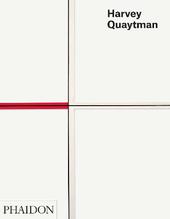
|
Harvey Quaytman
Hardback
Main Details
Description
Harvey Quaytman's interpretation of 1960s Minimalism and Hard-edge abstraction culminated in work that swayed between two and three dimensions. The result was sometimes odd but always elegant: arching forms appear like wedged shoehorns within the pictorial space, gently exposing painting's material infrastructure. During the 1970s, Quaytman delved further into abstraction, experimenting with rich, heavy pigments as well as his signature medium, rust. From 1985 onwards his work focused on the intersection of lines in cruciform shapes, giving his lifelong curiosity about the nature of painting a strict, mathematical logic.
Author Biography
Dore Ashton is an authoritative and original voice within American art of the last half-century. A renowned art historian and critic, she is Professor of Art History at New York s Cooper Union, and senior critic in painting and printmaking at Yale University. She is the author of more than 30 books and innumerable articles on modern and contemporary art and culture, including About Rothko (2003), The New York School: A Cultural Reckoning (1992), A Joseph Cornell Album (1989), Yes, But: A Critical Study of Philip Guston (1976), On Art: Documents of 20th Century Art (with Pablo Picasso, 1973), and Rauschenberg: XXXIV Drawings for Dante s Inferno (with Robert Rauschenberg, 1968). Kimmo Sarje, a practicing artist, is Adjunct Professor of Aesthetics at the University of Helsinki and lectures in the Doctoral Studies Programme at the Finnish Academy of Fine Arts, University of the Arts, Helsinki.
|